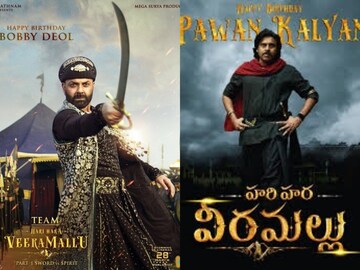June 2025 is shaping up to be a blockbuster month for Indian cinema, with two major films ready to hit the big screens. On one hand, we have Kamal Haasan’s stylish action drama Thug Life, directed by Mani Ratnam, promising a cinematic spectacle. On the other, Pawan Kalyan’s period epic Hari Hara Veera Mallu: Part 1 – Sword vs Spirit, helmed by Krishna Jagarlamudi and Jyothi Krishna, is also gearing up for a massive release.
Both films have generated tremendous buzz with aggressive promotions, stunning visuals, and the strong fan bases of their respective stars. Given their pan-India ambitions, both movies will be released in multiple languages, including Hindi. However, this wide-scale release strategy comes with a small caveat for Hindi-speaking OTT audiences.
As per multiplex chain regulations in North India, Hindi-language films released in major multiplexes must maintain a minimum 8-week theatrical window before appearing on digital platforms. That means, unlike some regional films that land on OTT within weeks, Hindi versions of Thug Life and HHVM won’t debut on streaming platforms in the first month, which might disappoint some fans expecting an earlier release.
The OTT rights have already been finalized: Thug Life will stream on Netflix starting June 5, 2025, while Hari Hara Veera Mallu is set to premiere digitally on June 12, 2025. While fans eagerly await both releases, the delayed OTT arrival of Hindi versions may test their patience just a bit longer.
